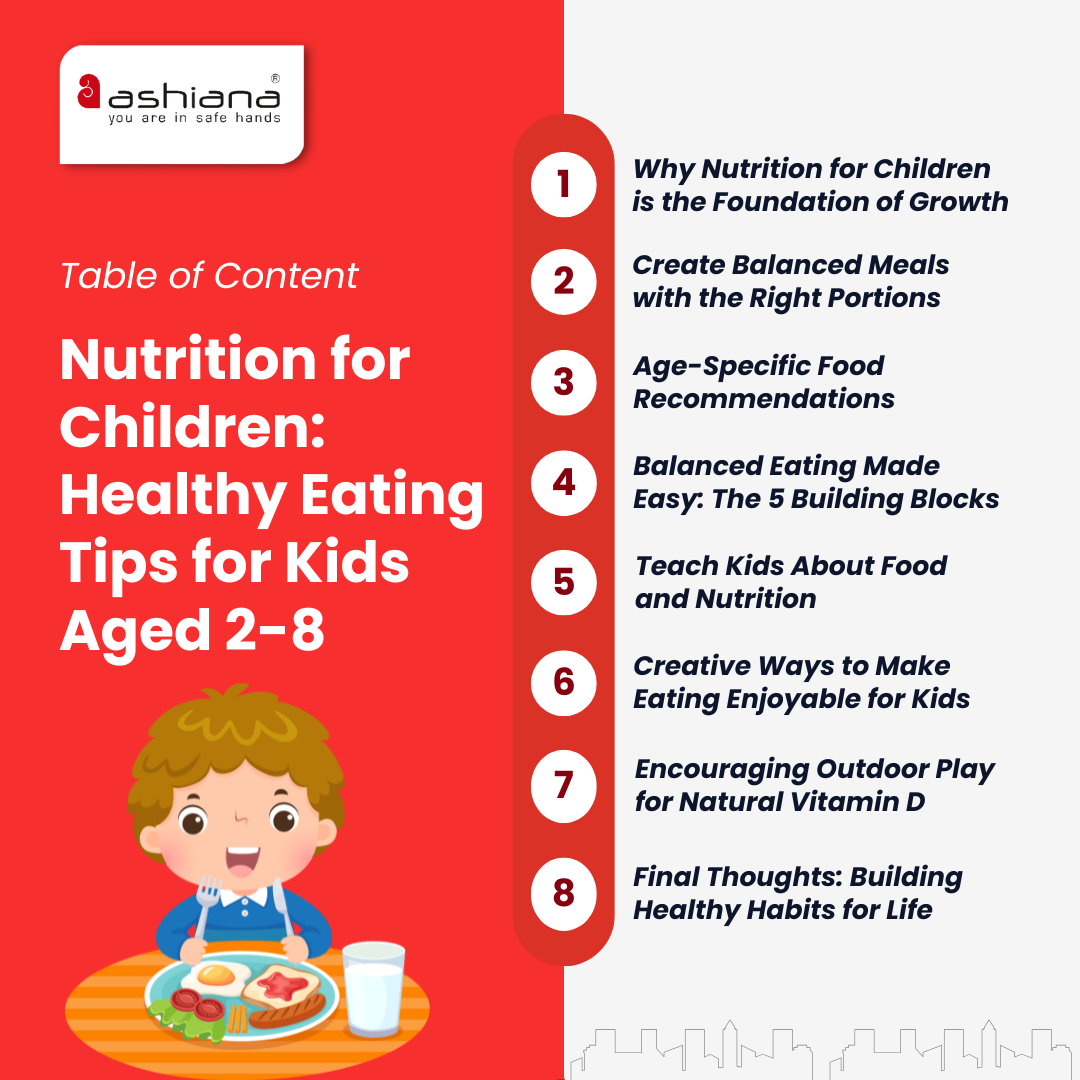

Proper nutrition for children aged 2-8 supports their rapid growth, strengthens their immune systems, and fuels their physical and cognitive development. Balanced meals during these years help establish lifelong healthy eating habits and prevent nutritional deficiencies.
Encourage picky eaters by involving them in meal preparation, offering two healthy options to choose from, and introducing new foods gradually alongside familiar favorites. Patience and a positive mealtime environment can make a big difference.
Healthy snack ideas include sliced fruits with nut butter, yogurt topped with granola, whole-grain crackers with cheese, or veggie sticks with hummus. These options provide energy and essential nutrients while being kid-friendly and easy to prepare.
Ashiana, Ashiana Housing build homes. Homes surrounded by vast green spaces and fresh breeze. Homes cocooned in secured gated complexes. Homes where futures are forged and there are opportunities to grow. And Homes in environments brimming with healthy activity, trust and respect. At heart, we build communities with care.
Other posts by Ashiana
Join 1000+ of fellow readers. Get expert real estate knowledge straight to your inbox absolutely free. Just enter your email address below.